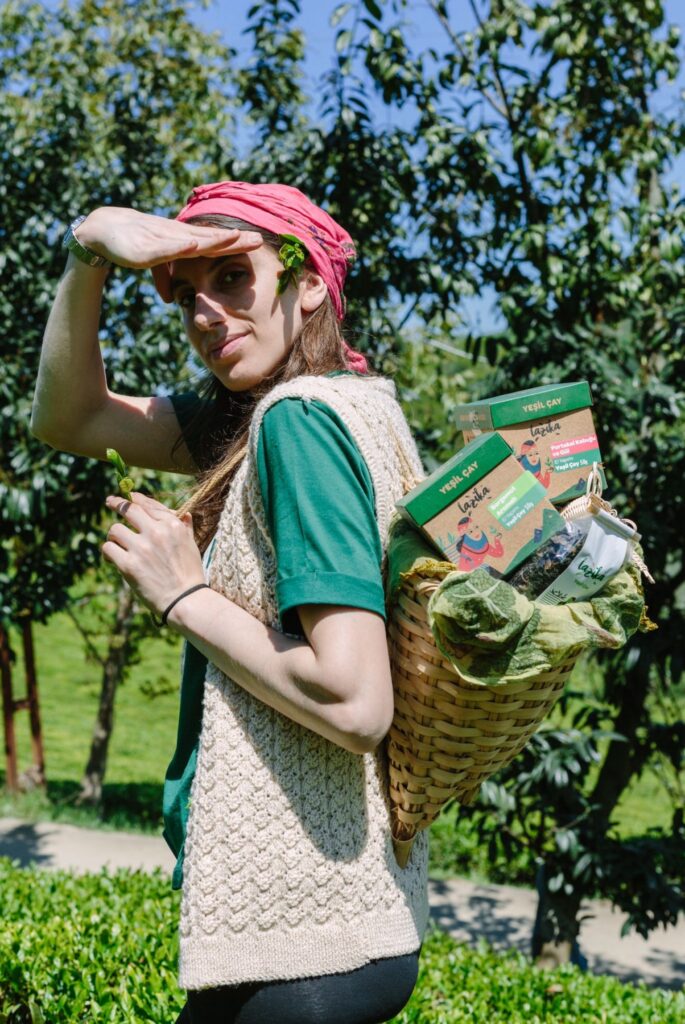In Turkey, tea is ubiquitous. Tea, or çay in Turkish, is served at breakfast, after each meal, and during breaks throughout the day. Walk down any Istanbul sidewalk, and you’ll see people perched on balconies and apartment stoops, delicately holding steaming-hot, tulip-shaped glasses on red-and-white striped saucers. On my street, the neighborhood çaycı goes door-to-door balancing an enormous tray, delivering fresh drinks to shopkeepers, and picking up empty glasses from earlier.
It’s not an exaggeration to say life happens over tea.
At a whopping 3.16 kg per year, Turkey ranks number one in per-capita tea consumption worldwide. That’s almost an entire kilogram more than second-place Ireland, which clocks in at 2.19 kg.
The tea in question is almost always a concentrated black tea made in a samovar: a large, two-chamber boiler where steam from the bottom chamber heats the tea steeping in the top section. The hot water in the bottom portion is also used to dilute the finished tea, similar to an Americano. These long infusions are strong and bitter and often sweetened by generous amounts of sugar.
But one family-owned tea company is trying to change that.
A New Chapter For Turkish Tea
“We wanted to do things a little differently,” says Yunus Emre Erçin, co-founder and CEO of Lazika, a vertically-integrated tea company based in Rize, Turkey.

Erçin and I met at his tea café in Istanbul’s Maslak district. A wall-sized timeline traces the emergence of tea drinking in China in 2700 BCE to the planting of the first tea farms in Turkey in the 1920s. He tells me about his business over a fresh infusion of black tea blended with tarragon and safflower. Like all of Lazika’s teas and tisanes, there are no artificial flavors or additives, just dried plants.
“Originally, I was going to make an electric tea brewer,” says Erçin. “Like an espresso machine, I wanted to shorten the brewing process.”
Typically, it takes about 20 minutes to make Turkish tea using a samovar. Erçin, an industrial engineer by training, believed he could make it more efficient.
“But then I thought, ‘First, I need to learn all about tea,” he says. More than seven years later, Erçin is still exploring the potential of Turkish tea.
Erçin had a significant leg up: his family hails from Turkey’s Black Sea region and, like many families in the area, own a tea field. They followed a common regional practice of separating the best leaves for themselves before blending the rest with their neighbors’ crops to deliver to the local tea processing factory.
Erçin began to wonder what would happen if they treated all of their tea with the same care. He also studied different ways of processing tea in other countries. His experiments led to Turkey’s first commercially sold oolong tea and a hand-rolled, whole leaf green tea.
Better Quality Through Harvesting
It was this hand-rolled green tea that first caught my attention. The tea is floral and delicate in the cup, with aromas of orange blossom, flavors of soft peach, and hints of water chestnut. I would associate the flavor profile with high elevation Chinese or Taiwanese green teas, not the finely-chopped oxidized black tea typically used to make Turkish tea.
Erçin attributes the depth of flavor to the health of the tea plants and the care his partners take when harvesting and processing the tea.
“In the fields, the quality is very good—it’s camellia sinensis,” says Erçin. Originally from China, this variety of tea is often compared to coffea arabica. The unique microclimate of Turkey’s Black Sea region—temperate and humid year round—provides an environment where the plant thrives.
Despite these environmental factors, Erçin has seen a steady decline in overall tea quality since the collapse of the state tea monopoly in the 1980s.
“Tea quality continues to get worse. This is not because of the leaves, but from harvesting practices, transportation to the factories, and processing,” he says.
Erçin explains that large tea companies like Lipton and state-owned Çaykur offer no incentives for tea quality, just a flat rate per kilogram. As a result, most tea farmers in Turkey harvest their tea with scissors, which is more efficient but also damages the plant and harvests inferior leaves and parts of the stem.
“If you pick by hand, you only collect the first few leaves on a branch, but if you use scissors, you can get up to 50 cm of the branch,” he says.
But a growing number of producers within Erçin’s social network are implementing selective picking practices thanks to training seminars and the cash incentives Lazika offers for hand-picked tea. According to Erçin, Lazika relies on an informal abla network (Turkish for “older sister”) to spread the word about higher prices for hand-picked tea within the community.
Although Erçin admits it can be challenging to convince his fellow tea farmers to implement best practices, he only sees the potential.
“We had the idea,” he says. “Could this region be known for tea like Champagne is known for wine?”
Michael Butterworth is the cofounder of etkincoffee.com and thecoffeecompass.com. He lives in Istanbul, Turkey.



















